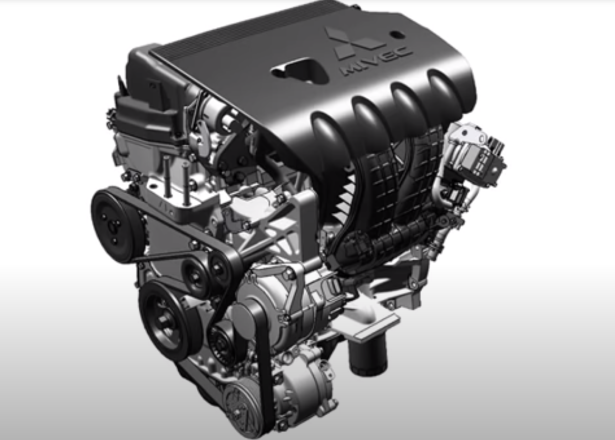
Mitsubishi’s MIVEC Engine
Mitsubishi Motors has been at the forefront of innovation focusing on technologies to control valve timing and the amount of lift. This impressive MIVEC technology aims at providing high power output, lower fuel consumption and reduced exhaust emissions.
Since launching the original MIVEC engine in 1992 in the Mirage, Mitsubishi has been adding several enhancements to produce more and better performance. Mitsubishi Motors adopted a mechanism that would continuously and optimally control the intake and exhaust valve timing.
They fitted this technology in the Mitsubishi Outlander (launched in 2005), the Delica D:5 and the Galant Fortis from 2007. Today, the all-new enhanced MIVEC engine controls intake valve timing and the amount of valve lift at the same time, all the time.
MIVEC SOHC 16 Valve Engine (4J1 Model)
For those who don’t know, MIVEC stands for Mitsubishi Innovative Valve timing Electronic Control system which is the general name given for all engines equipped with the variable valve timing mechanism.
The new MIVEC engine shows an improvement in environmental performance compared to the previous model. It reduces pumping losses by carefully adjusting the air intake volume which also improves fuel efficiency.
Although the new MIVEC engine has a simple SOHC structure, engine performance is similar to the previous engine. In addition to the AS&G (Automatic Stop and Go) idling-stop system achieving a smooth stop-and-start with minimal vibration, it also allows for better fuel consumption by reducing the air intake volume.
How Does The New MIVEC Technology Work?
The reason MIVEC technology offers greater fuel efficiency has to do with the air intake. In a conventional petrol or diesel engine, a throttle valve controls the intake air volume which increases the air intake resistance when a piston descends.
With the new MIVEC engine, it restrains the air intake resistance by simultaneously and continuously controlling the intake valve lift and the valve opening/closing timing. As a result, the new and improved MIVEC engine improves fuel consumption by reducing pumping loss during air intake.
Thanks to this mechanical interlock structure, cooperative control of the hydraulic variable valve timing system becomes unnecessary. According to Mitsubishi, their new MIVEC system can be adapted to the simple SOHC structure offering a new lighter and more compact engine.
MIVEC DOHC 16-Valve Engine (4B1 Model)
The 4B1 MIVEC engine series used in the Mitsubishi Outlander, the Japanese-market Delica D:5 and Galant Fortis models incorporates the continuously variable intake and exhaust valve timing system. It continuously and optimally controls the intake and exhaust valve timing according to engine running conditions. As a result, this system delivers higher performance and improved fuel efficiency.
This technology continuously controls the intake cam and exhaust cams independently and that means providing a combination of maximum power, high fuel efficiency and increased environmental performance. By enabling more precise valve control according to RPM, these engines outperform intake-only systems.
For more interesting articles covering all the latest updates from around the world, have a look at our blog or follow us on Facebook. You can also visit our website to browse our incredible selection of new and quality pre-owned Mitsubishi vehicles.

